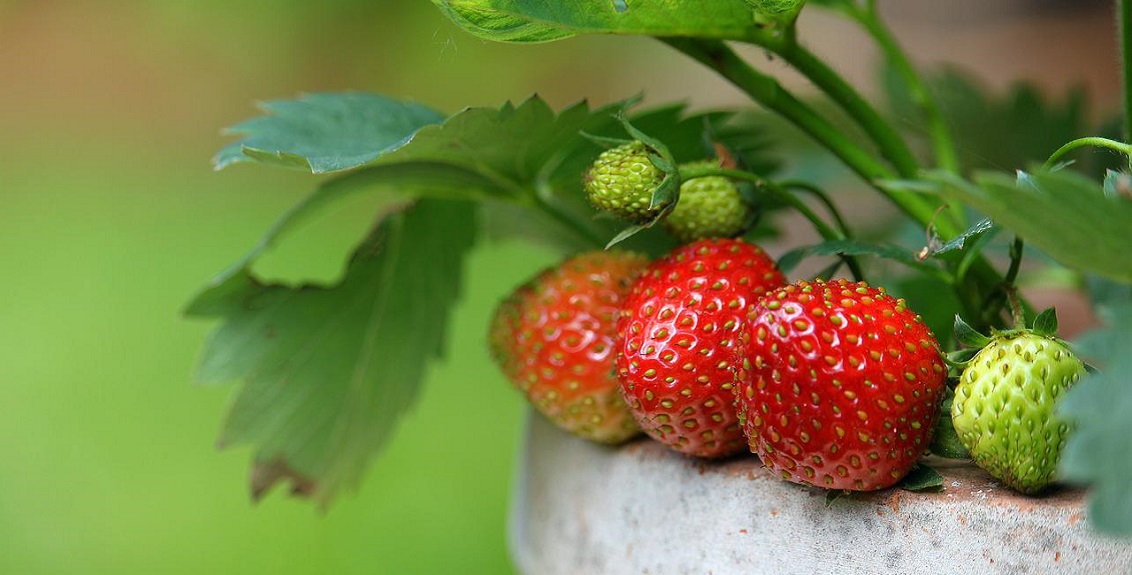This idea is especially useful if you only have a small growing space and it is a great way to bring your strawberry harvest right to your doorstep. You may have seen pallet projects before but this one is simple, relatively quick, and results in a planter that you can use to grow strawberries, flowers, veggies, shrubs, or greenery of your choice. Pallets must be heat treated and chemical free so that there are no harmful substances that can leach into the roots. The project requires one pallet, a few hand tools, and a couple of hours on a sunny afternoon.
This planter is ideal for those who would like to grow strawberries on their patio or in a small space. It also helps to keep the ripe berries off the ground and safe from slugs and snails.
Strawberries can be grown in a wide range of soils, from light sand to heavy clay. The ideal soil is well-drained and rich in humus. They prefer to be planted in full sun, out of the wind. Strawberry plants can produce fruit for five or six years. But after the first two years the yields will be reduced dramatically and a build-up of pests and diseases can occur. Strawberry beds are usually kept for two or three years before they’re cleared and planted on new ground.
Growing Strawberries In A Hanging Basket
- Growing strawberries in a hanging basket ensures they’re kept out of the way of slugs.
- Plant five to six plants in a basket in spring, and water every day during the growing season.
- From flowering until harvest, feed the plants every ten days with a product that’s high in potassium, such as a tomato feed.
- The same strawberry plants should continue to produce fruit the following year, but the crops will be better if the plants are renewed.
How to harvest
- It’s important to pick any fruit as soon as it’s ripe to prevent it rotting on the plant. Check the plants every other day during the ripening period.
- The fruit is ready when it has turned red, although different varieties have different shades.
- It’s best to harvest the fruit in dry weather. Pick gently to avoid bruising and make sure the green stalk (calyx) remains with the fruit.

Aftercare
- After harvesting, remove the straw or matting that has been protecting fruit from the ground. Compost straw and debris, or clean and store matting for next year.
- Cut off old leaves with hand shears and remove, leaving the crown and new leaves untouched. This allows sunlight into the centre of the plant, ensuring a better crop next year.
- Feed and water well.
- Leave nets off to allow birds to pick off any pests.
Propagation
- It’s simple to make more strawberry plants. The plants send out runners over the surface of the soil during the growing season. These can be pegged down, usually in June or July, while attached to the mother plant. Eventually, they will form a separate plant.
Don’t allow more than five runners to develop from each plant. In August, when the runner plants are well established, cut them from the parent and transplant immediately.
